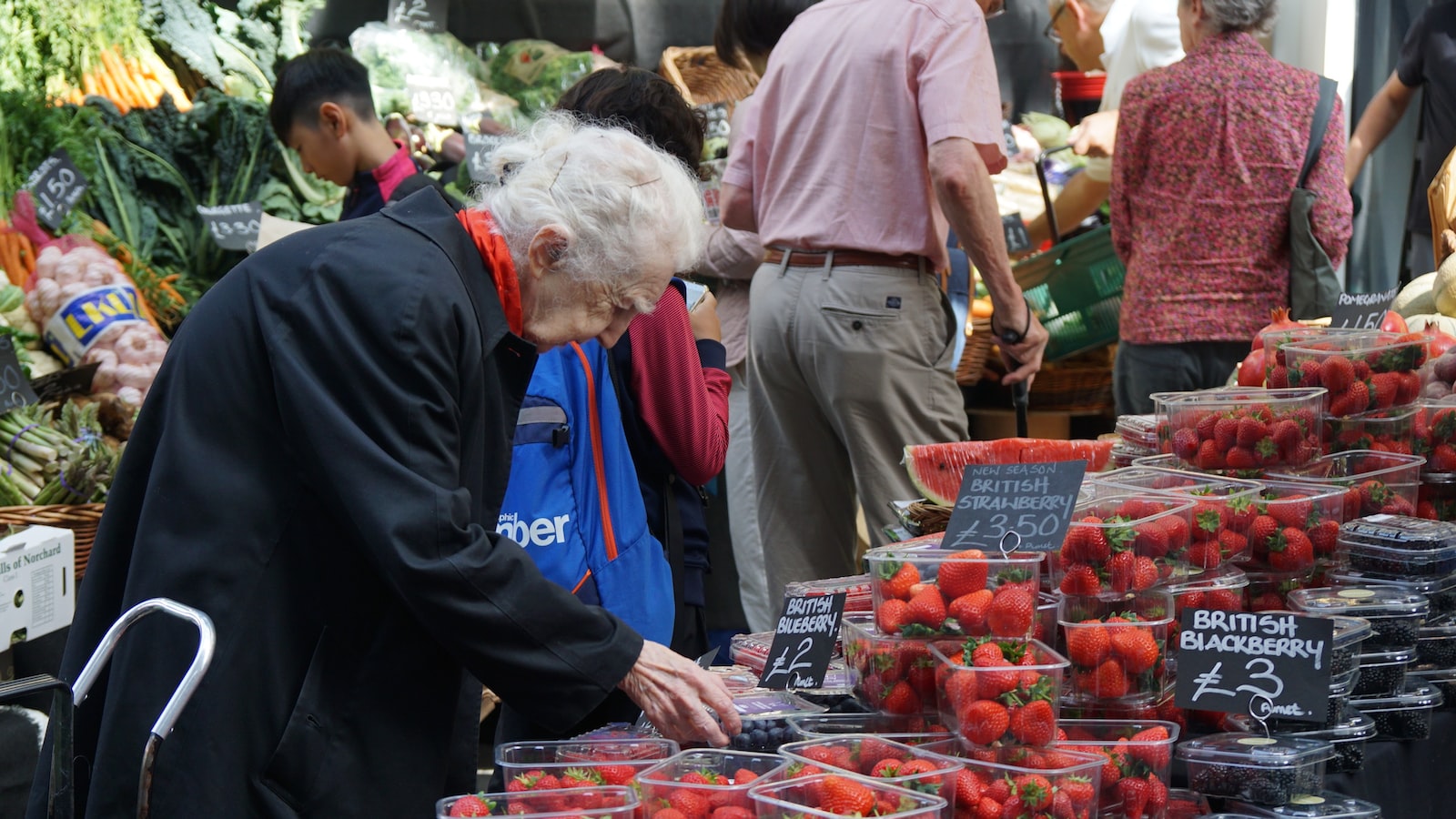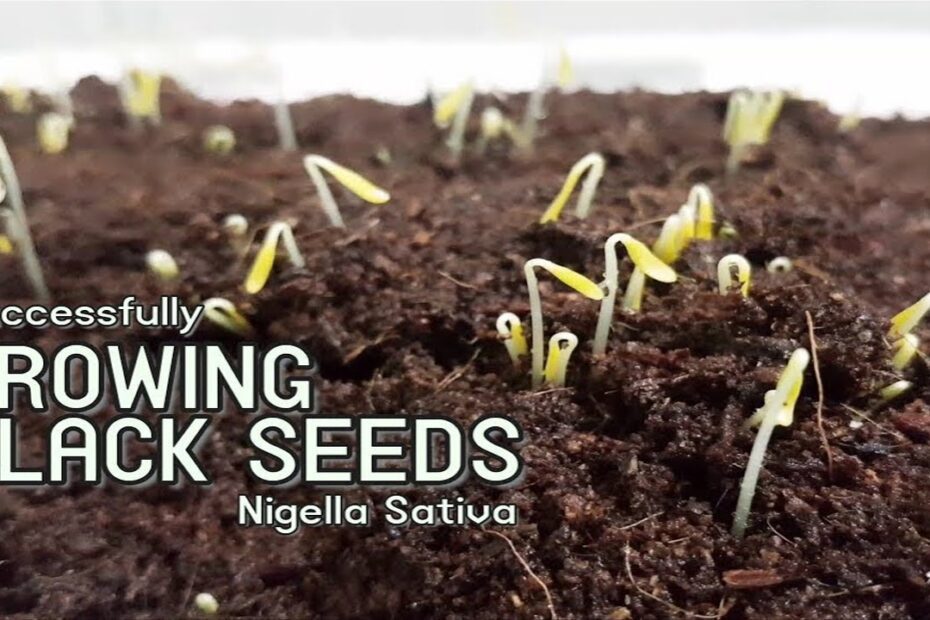Unveiling the secrets of nature’s unassuming powerhouse: the magnificent black seed plant. With its origin deeply rooted in ancient civilizations, this enchanting herbaceous wonder has captivated cultivators for centuries. Known by many names – Nigella sativa, black cumin, or simply black seed – this plant possesses a mystical allure that transcends time. Whether you’re an adept herbalist seeking to expand your garden, or a budding green thumb yearning to unlock the secrets of the earth, join us on an extraordinary journey as we explore the art of fostering and nurturing the black seed plant. In this comprehensive guide, we will delve into the fundamental tenets of successful cultivation. From choosing the perfect soil and sowing the magical seeds to embracing the art of pruning and harvesting, prepare to embark on an adventure that promises a bountiful harvest and an unrivaled sense of fulfillment. Harnessing nature’s mysterious forces has never been more captivating, as we unravel the steps required to grow this remarkable plant. So, sharpen your shears, gather your gardening gloves, and let’s unlock the enchantment of growing the elusive black seed plant together.
Choosing the Right Environment for Black Seed Plant Growth
Black seed plants, also known as Nigella sativa, are aromatic plants that have been used for centuries for their medicinal properties. Whether you are a seasoned gardener or a beginner, understanding the right environment for black seed plant growth is crucial to ensure healthy and thriving plants. Here are some essential tips to help you create the perfect setting for these remarkable plants to flourish.
First and foremost, black seed plants thrive in full sunlight. Position them in an area of your garden that receives at least six to eight hours of direct sunlight per day. This will not only stimulate robust growth but also enhance the potency of the seeds they produce. Additionally, ensure that the chosen location has well-drained soil with a pH level between 6.0 and 8.5. Black seed plants are adaptable and can survive in various soil types, including sandy or loamy soil. However, adding organic matter, such as compost or well-rotted manure, can significantly improve soil fertility and drainage, ultimately benefiting your plants.
While black seed plants are relatively hardy, they do require regular watering to thrive. Aim to keep the soil consistently moist, but not waterlogged, throughout the growing season. Watering deeply and infrequently is preferable to shallow and frequent watering, as it encourages strong root development. Mulching the soil around the plants with organic material, such as straw or wood chips, can help in retaining moisture and preventing weed growth. Furthermore, be sure to fertilize black seed plants every four to six weeks during the growing season using a balanced, slow-release fertilizer. This will provide them with the necessary nutrients they need for optimum growth and seed production.
In order to summarize the essential features and tips for growing black seed plants, refer to the following table:
| Feature/Tips | Description |
|---|---|
| Sunlight | Position the plants in a sunny area, receiving 6-8 hours of direct sunlight daily. |
| Soil | Choose well-drained soil with a pH level between 6.0 and 8.5. |
| Watering | Keep the soil consistently moist but not waterlogged, watering deeply and infrequently. |
| Fertilization | Regularly fertilize with a balanced, slow-release fertilizer every 4-6 weeks during the growing season. |
| Mulching | Mulch the soil with organic material to retain moisture and suppress weed growth. |
By providing the ideal environment, you can ensure the successful growth of black seed plants in your garden. Remember to monitor their progress, protect them from pests, and enjoy the beauty and benefits of these remarkable plants.

Understanding Black Seed Planting Techniques
Have you ever wondered how to successfully grow the fascinating black seed plant in your own garden? Look no further, as we delve into the secrets of cultivating these unique and beautiful plants. With the information provided below, you’ll gain valuable insights on the appropriate planting techniques and care required to nurture a thriving black seed plant in your home.
| Features | Tips |
|---|---|
| Growth Habit: | The black seed plant, also known as Nigella Sativa, is an annual flowering herbaceous plant that reaches a height of 12-20 inches. |
| Soil and Location: | The plant prefers well-draining soil, enriched with compost, and should be placed in a sunny spot that receives at least six hours of direct sunlight per day. |
| Watering: | Regular watering is essential, especially during the dry spells. However, ensure not to overwater as the plant dislikes excessive moisture. |
By adhering to these simple yet effective tips, you’ll be on your way to growing a robust black seed plant that will captivate you with its unique charm and enhance the beauty of your garden.

Nurturing Black Seed Plants: Watering, Soil, and Light Requirements
Black seed plants, also known as Nigella sativa, are beautiful and versatile additions to any garden. If you’re interested in learning how to grow these captivating plants, it’s important to understand their specific watering, soil, and light requirements.
Watering: Black seed plants prefer moist, well-draining soil. Be sure to water them consistently, keeping the soil slightly damp but never waterlogged. Overwatering can lead to root rot, so it’s crucial to strike the right balance. During hot summer months, it’s advisable to increase watering frequency to ensure the plant remains hydrated.
Soil: These plants thrive in a fertile and loamy soil mixture. Prior to planting, enrich the soil with organic matter like compost or well-rotted manure to improve its nutrient content. Black seed plants prefer a neutral to slightly alkaline soil pH level between 6.0 and 7.5, so consider adjusting your soil accordingly.
Light Requirements: Black seed plants are highly adaptable and can tolerate a wide range of light conditions. However, they do best in full sun, ideally receiving 6-8 hours of direct sunlight per day. If you’re growing them indoors, place them near a south-facing window where they can bask in the sun’s rays. In areas with intense afternoon heat, partial shade or dappled sunlight during the hottest part of the day can be beneficial.
Features and Tips:
| Feature/Tips | Benefits | Notes |
|---|---|---|
| Regular pruning | Promotes bushier growth | Prune after flowering to encourage new growth |
| Companion planting | Repels certain pests | Black seed plants pair well with marigolds and basil |
| Harvesting seeds | Culinary and medicinal uses | Allow seed pods to dry on the plant before collecting |

Promoting Black Seed Plant Health: Fertilization and Pest Control
Black seed plants are a wonderful addition to any garden, providing not only a beautiful aesthetic but also numerous health benefits. To ensure the optimal growth of your black seed plants, it is crucial to focus on fertilization and pest control. By incorporating these practices into your gardening routine, you can promote the health and vigor of your black seed plants, allowing them to thrive.
Fertilization is key when it comes to nurturing black seed plants. These plants benefit from a balanced and organic fertilizer rich in nutrients such as nitrogen, phosphorus, and potassium. It is recommended to apply the fertilizer during the growing season, ensuring even distribution around the base of the plant. This will provide the necessary nourishment for the black seeds to develop and flourish. Additionally, regular watering combined with the use of organic mulch will help retain moisture in the soil and promote healthy growth.
Pest control plays a crucial role in the well-being of your black seed plants. These plants are resilient, but like any other, they can attract unwanted pests. To naturally control pests and keep your plants thriving, it is important to employ preventive measures. Companion planting is a fantastic technique that involves strategically planting other insect-repelling plants near your black seed plants. Herbs such as mint, basil, and lavender are great options. Additionally, regularly inspecting your plants to identify and remove any pests or disease-infected leaves is essential. This will help keep your black seed plants healthy and vibrant throughout the growing season.
| Features | Tips |
|---|---|
| Use balanced organic fertilizer | Apply fertilizer during the growing season |
| Water regularly and use organic mulch | Retain moisture in the soil |
| Employ companion planting | Plant insect-repelling herbs near black seed plants |
Frequently Asked Questions
Q: Can the black seed plant thrive in any climate?
A: Just like a resilient superhero, the black seed plant can conquer a wide range of climates. However, it truly thrives in warm and sunny environments, so make sure to provide it with an abundance of sunshine to witness its full glory!
Q: How much water does the black seed plant need?
A: Ah, the black seed plant is quite the savvy drinker! It enjoys a balance between staying hydrated and not drowning its roots. So, let’s be moderate. Water your black seed plant consistently, but allow the soil to dry slightly between waterings. Remember, finding the perfect balance is the key to a healthy and flourishing plant!
Q: Can I boost the growth of my black seed plant with magical potions?
A: Hear ye, hear ye! While we certainly understand the temptation to sprinkle magic on your plants, it’s best to leave the cauldron for other ventures. The black seed plant is an independent soul and will grow splendidly with a well-balanced fertilizer. Feed it monthly during the growing season, and watch the magic unfold naturally before your eyes! As we come to the end of this enlightening journey on how to grow the magnificent black seed plant, we hope you now possess the knowledge and enthusiasm to embark on your own green-thumb adventure. Remember, patience and a little tender loving care are the keys to unlocking the boundless potential of this extraordinary plant.
So go ahead, find the perfect spot in your garden or create a cozy indoor oasis where your black seed plant can thrive. Experiment with different techniques and methods, channel your inner botanist, and watch in awe as nature unfolds its remarkable wonders before your eyes.
As your black seed plant sprouts, unfurls its mesmerizing foliage, and graces you with its delicate blossoms, you will undoubtedly feel a sense of accomplishment and connection with the natural world. Let this be a reminder of the endless miracles that lie within the humble seeds we so often overlook.
In addition to its immense beauty, the black seed plant offers a plethora of health benefits. Harness the power of its seeds, be it for culinary adventures, herbal remedies, or simply as a decorative touch to elevate your culinary creations. The options are as vibrant as the mesmerizing shades these seeds possess.
As time passes, you may encounter challenges along the way. But fear not, for every setback is an opportunity to learn, adapt, and grow alongside your black seed plant. Embrace the journey, for it is in the dance between trial and triumph that the true beauty of nurturing life is revealed.
Remember, this is just the beginning of your story with the black seed plant. As it grows and flourishes under your watchful eye, the bond that forms between you and this extraordinary being will become an enriching part of your daily life.
In this ever-expanding world of concrete and steel, the black seed plant becomes a gentle reminder to slow down, to connect with nature, and to witness the awe-inspiring cycle of growth and rebirth. So, go forth and explore the boundless possibilities that await you in this botanical realm. May your journey be filled with joy, blooming possibilities, and an endless fascination for the wonders of nature. Happy planting!
- When to Put Weed and Feed on Lawn in Michigan - October 16, 2023
- When to Fertilize Potatoes Plants - October 16, 2023
- Can You Plant Clover in the Spring - October 16, 2023
Contents

